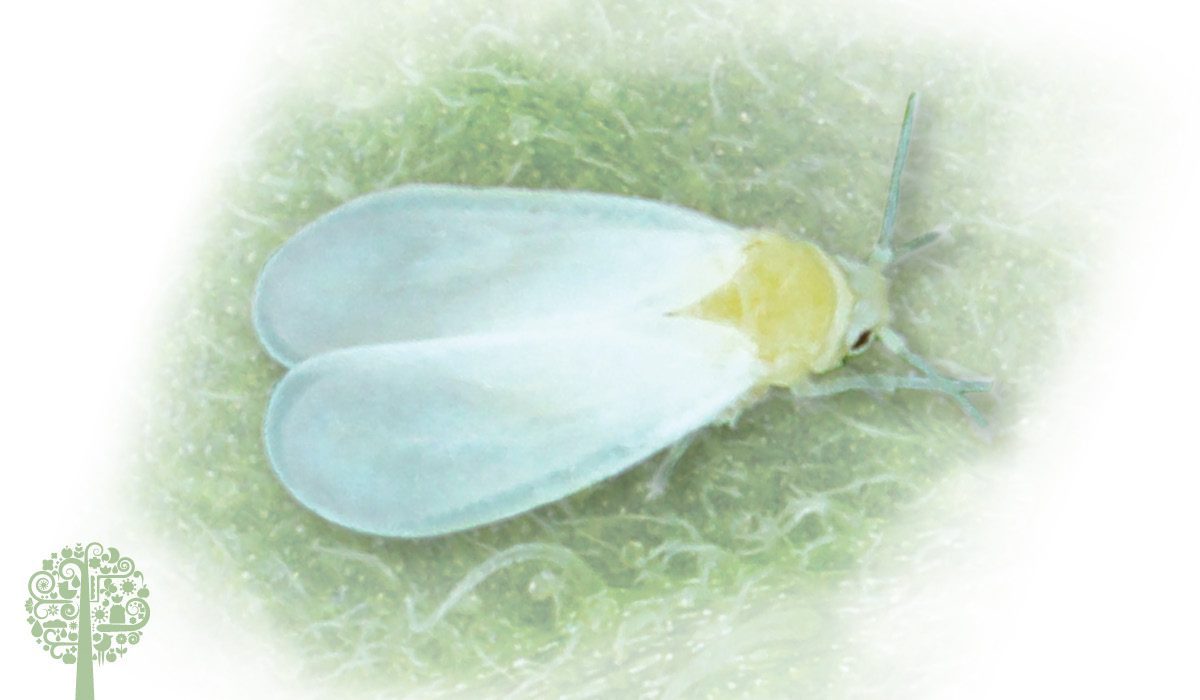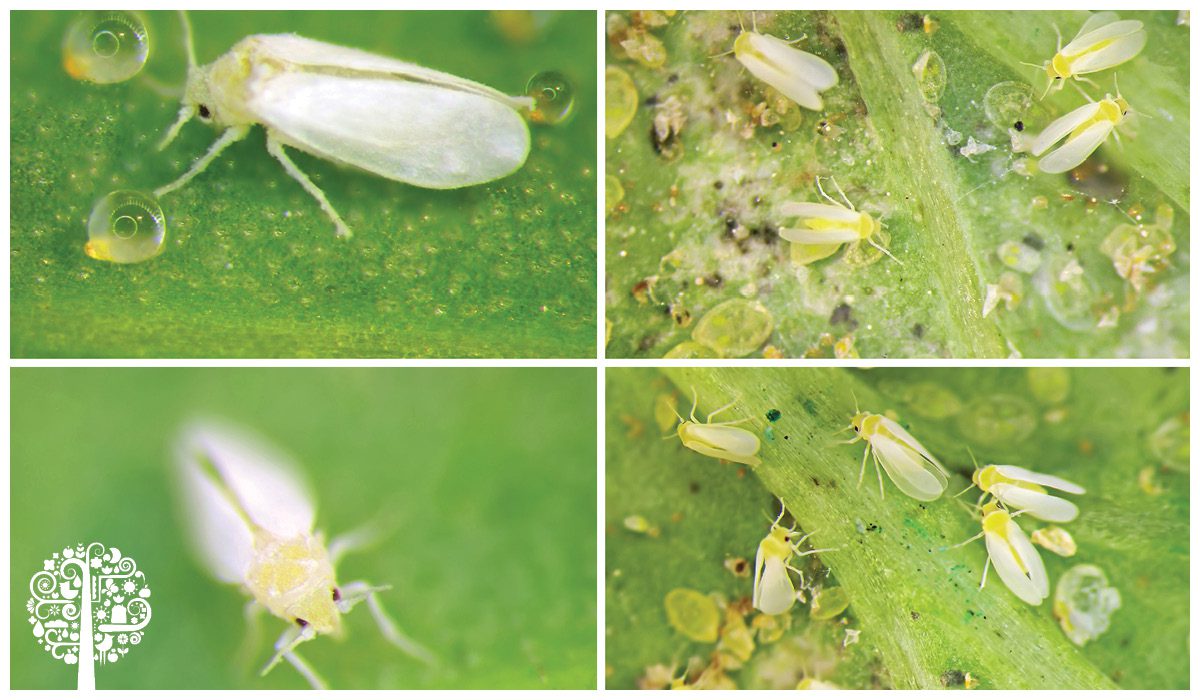SOS! Preventing and Controlling Whitefly Infestations
Whether growing indoors or outdoors, likely, you’ve already encountered the whitefly. A typical garden pest, whitefly reproduce rapidly and are incredibly destructive if left untreated. However, with the following tips and tricks, a whitefly infestation can be quickly controlled, and perhaps even avoided altogether!
What are Whiteflies?
Whiteflies are moth-like bugs. Around 2mm in size and oval in shape, whiteflies are coated in a powdery wax, which protects them and gives them their color. The pest can fly, giving it easy access to plants and a variety of growing environments.

Whiteflies aren’t picky and are found on many different plants in the house and greenhouse. They survive by sucking the sap from the leaves and begin doing so from the moment the larvae hatch. Unfortunately, whiteflies can cause a lot of damage before you even realize you have a problem.
Lifecycle and Reproduction
The female adult whitefly will lay hundreds of eggs in her lifetime, mainly on the underside of leaves—the eggs hatch between seven and ten days later. Eggs are deposited in a circular pattern and are pale yellow at first, turning brown just before they hatch.
Whitefly larvae mature in two to four weeks, and adults live for up to six weeks after that. The reproduction rate depends on temperature, with the ultimate conditions being between 80-90°F (27-33°C).
Signs of Infestation
Whiteflies and their eggs may appear on the plant as clusters of tiny white specks, and while they like the underside of leaves, they can be found anywhere on the plant. The garden pest prefers to suck the sap from new growth, so check newly sprouted leaves regularly in addition to the stem and more mature leaves. Whiteflies produce honeydew, a sticky residue that will appear on infested plants.

An infestation will cause leaves to appear mottled, spotty, limp, and lifeless. In time, leaves will turn pale or yellow and fall off, and the plant may eventually die. Whiteflies are easily disturbed, so if you gently shake the plant, they will fly away and then settle once again.
Plant Impact
As whiteflies suck the sap, the plant’s health and vitality will suffer. The sticky residue the pest secretes often leads to fungal diseases such as sooty molds. Whiteflies are also known to carry and spread a variety of viral infections, leading to the plants’ demise even after eradicating the bugs themselves. That’s why it is is so critical to act fast when you spot an infestation.
How To Cure An Infestation
Insecticidal sprays are useful but will only kill the eggs and nymphs. Use this first and then use another method to kill the adults. Make homemade insecticidal soap or buy a premixed organic one. For a homemade solution, mix one teaspoon of mild liquid soap with one liter of water and spray onto the plant, concentrating on the underside of the leaves.
Killing adult whiteflies is much more difficult, as they fly around and lay eggs on other plants. For this reason, glue boards are a useful tool. The sticky, yellow pads can be hung in close vicinity to the plant to catch and monitor pest levels. The board’s yellow hue gives the appearance of new plant foliage to attract whiteflies, who eventually become stuck in the glue, unable to move.

Another tip is to shake the plant to dislodge the flies and suck them out of the air with a vacuum hose. This method can dramatically reduce numbers, making it easier to deal with the remaining population.
How To Prevent An Infestation
Reduce the risk of bringing whiteflies into your growing environment by inspecting all new plants. Ideally, isolate and monitor new additions for a few days. Afterward, check all plants regularly for any signs of infestation.
If growing in an indoor environment, use a filtering sheet over any intake filters. This trick prevents garden pests from hitching a ride through the ventilation system. Keep the grow room temperature under 80°F (27°C), as whiteflies favor warmer conditions for reproduction. It’s also an excellent idea to introduce beneficial insects into the growing environment. Whitefly predators include ladybugs, spiders, and dragonflies, amongst others.
Neem oil can be applied to the plant’s leaves, acting as a protective barrier between pest and plant leaf. The oil prevents the whitefly from penetrating the leaf surface and sucking the sap, while also coating their soft bodies and killing them before laying eggs.
The best advice for dealing with whiteflies, or any pest for that matter, is to be persistent with prevention and control measures until you are 100% sure that all traces of the critters are gone. Consistency and routine are critical!




